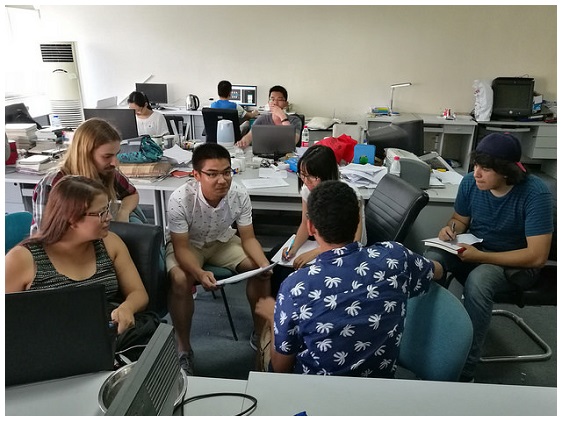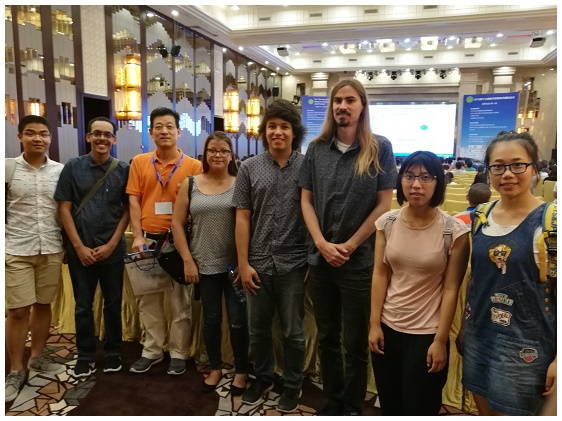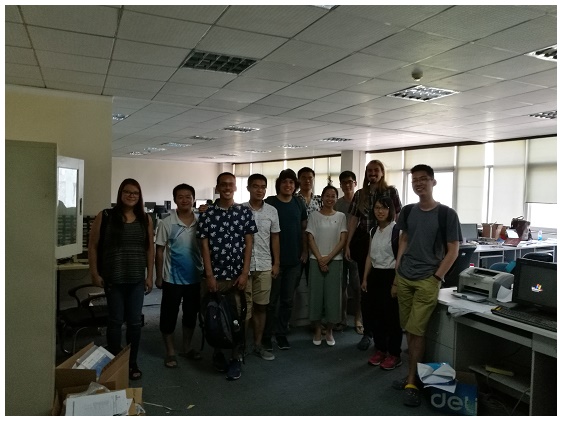Today we decided to take a trip to the Wuhan Zoo. We met with Dian and Jiao in front of our apartment at 8:00am and made our way to the subway. Once we arrived at our destination, we took an uber the rest of the way. Since we were visiting on a Saturday, we were expecting to see a lot of people there. To our surprise the zoo was fairly empty, so we got to enjoy the zoo without the crowd. People most likely avoided coming because of the scorching heat, but we were determined to see the red pandas Dian and Jiao had told us about. The zoo is surrounded by a large lake filled with black and white geese, cranes, ducks, and other exotic birds I could not identify. As we walked along we came across a pond full with coy fish, and we payed a few yuans to get a chance to feed them. As soon as we dropped some food in the water, all of the coy fish swarmed to try and eat some food. The central part of the zoo contained wild animal exhibits, and we got to see a lot of different animal such as penguins, hippos, kangaroos, and of course the red pandas. Most of the animals we saw seemed sluggish probably because of the weather; they most likely they despised the heat just as much as we did. Afterwards we went to a nearby mall and had lunch at a traditional japanese restaurant before returning back to the university.






